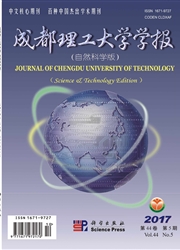

 中文摘要:
中文摘要:
中新世早期膏藏高原腹地曾经发育了面积巨大的古大湖,此时恰逢青藏高原的快速隆升关键时期。为研究高原腹地在此期间环境的演化,对五道梁组中介形虫壳体的Mg/Ca和St/Ca的值进行了测试。通天河盆地五道粱组地层中的介形虫壳体的Mg/Ca和Sr/Ca数值的特征,结合剖面岩性特征,反映了23.8~21.8Ma前该湖泊区域气候由湿润-干旱-暖湿的演化趋势。其气候的变化可能是此时期青藏高原从快速隆升到剥蚀夷平后高原北部构造隆升活动的结果。该研究为进-步了解青藏高原腹地的古环境探索了一条新的途径。
 英文摘要:
英文摘要:
The extensive distribution of lacustrine strata of the Wudaoliang Group indicates a durative, stable paleolake environment in the interior of the Tibetan Plateau during early of Miocene period. To understand the evolution of the environment of the interior of the Tibetan Plateau during this period, the content Mg/Ca and Sr/Ca of ostracod shells from the Wudaoliang Group has been measured. The characteristic of Mg/Ca and Sr/Ca of ostracod shell geochemistry and sedimentology of the measured section located in the Tongtianhe basin reflects that during 23.8~21.8 Ma B. P. , the evolution of the climate in the area experienced the course from wet and wet to dry, at last to warm and wet. The climate change should be the result of the tectonic reactivity after the Tibetan Plateau uplift to denudation and planation. This research explores a new method to study the paleoenvironment in the hinter of the Tibetan Plateau further.
 同期刊论文项目
同期刊论文项目
 同项目期刊论文
同项目期刊论文
 期刊信息
期刊信息
